I’m sure we can all agree that it’s been a crazy 12 months. We’ve done really well in New Zealand, but it’s still been very stressful. One of my healthier coping mechanisms for stress is making. Keeping my hands busy helps keep my mind calm (er).
So I’ve actually made a lot of things in 2020, and completed every Historical Sew Monthly 2020 challenge, some of them several times over. So, what did I make?
January: Timetravelling Garments:
Create an item that works for more than one historical era, or that can be used for both historical costuming, and modern wear. It could be an apron that could do 1770s or 1860s in a pinch, a shift that can work under many decades of fashion, or a historical cape you also wear everyday, etc.
I really took advantage of the 2020 change to the Historical Sew Monthly rules that allowed you to complete the challenges at any time with this one. The first challenge of the year was the last thing I made: a ruffly apron that is (strictly speaking) 1780s, but could easily be used throughout the 18th century, and in much of the 19th as well.
I just need to find an excuse to photograph it!
February: Re-Use:
Use thrifted materials or old garments or bedlinen to make a new garment. Mend, re-shape or re-trim an existing garment to prolong its life.
This straw hat had a whole life before it came to me, and bore the scars of its use. It then went through many iterations before it finally became a 1910s-20s hat I’m proud of.

March: Green:
Make something in a shade or shades of green. If you can also make it ‘green’ in the figurative sense, even better!
I’m a little gutted about this one. Green is one of my favourite colours, and I had grand plans for this challenge. I wanted to make something green in both senses. And instead I just used some fabric from my stash, and didn’t even like what I made in the end. I literally call it ‘the Sad Sack‘. But I did have a lovely time wearing it, so that’s something!
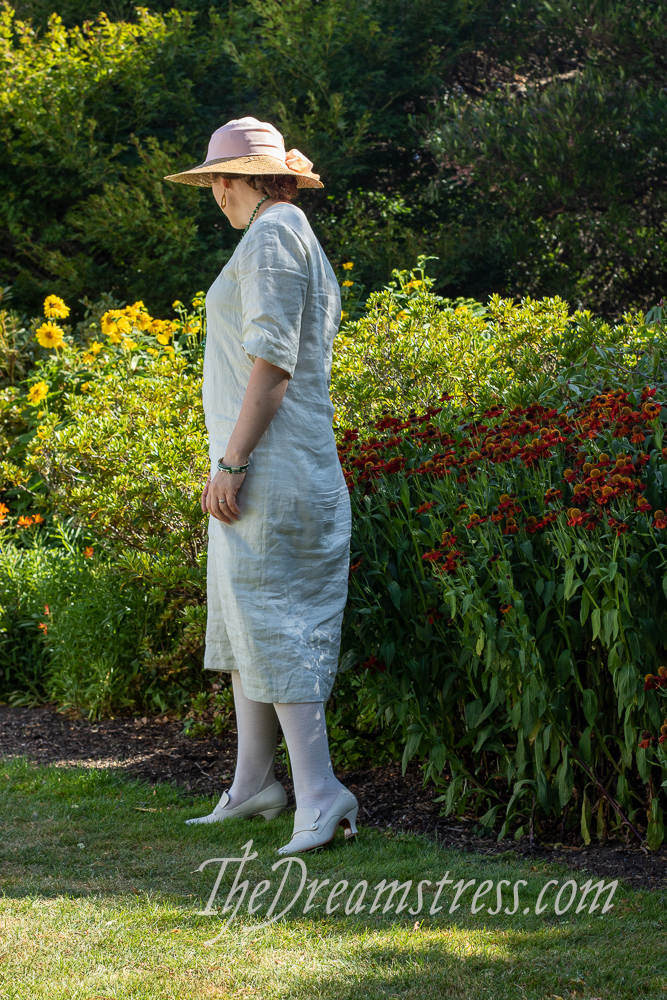
April: Local:
Support your local industry and your local history by making something that (as much as possible) uses materials made locally, or purchased from local suppliers, or that features a garment specific to your part of the world.
In a complete reversal from March’s entry, I love everything about the 1890s shirtwaist I made for the Kate Sheppard Museum. This blouse tells an important New Zealand story, and is made entirely from materials found at local shops and fabric fairs.

May: Basic:
Make a garment that can be used for many occasions (like a shift, or the classic ‘Regency white dress’), or a simple accessory that will help you stretch the use of an already existing garment.
How about… 18th century sleeve ruffles and a tucker? Super important for making an outfit look finished, and something that can move from garment to garment. These were a great little project to carry around in a small bag as my hand-sewing.
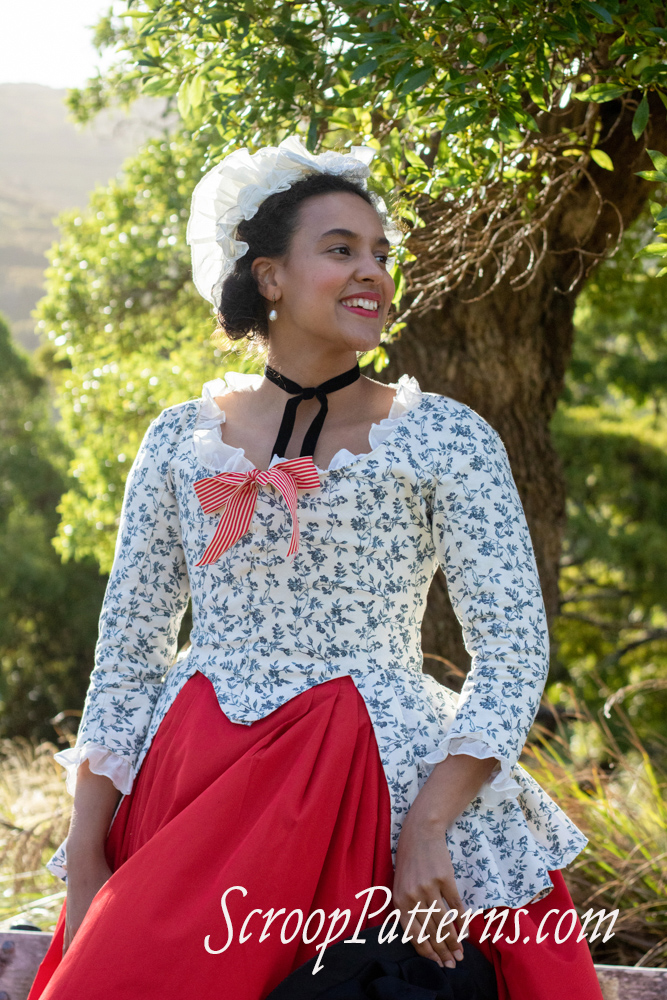
I also did everything but the hemming on an 18th century under-petticoat that I made for my friend Jenni. She finished the hemming, so it’s a joint effort.
June: It’s Only Natural:
Make something inspired by nature, or use natural fibres and materials in a way that stretches your usual practice (e.g. natural dyeing, using cane instead of plastic whalebone for corsets/stays etc.). Or challenge yourself and do both!
OK, this one’s a little weird, and I haven’t photographed them yet. Now with photographs and a full detailed blog post!
I made 1780s hair cushions for my hair, and stuffed them with…my hair. I’ve got a ton of hair. It’s long, and thick, and I loose a lot of it every day. So I keep what I loose, and wash it. Using lost hair as hair padding was done in the 19th century, and I strongly suspect it was done in the 18th – and it certainly works well. It’s definitely very natural, although possibly squicky for some people.
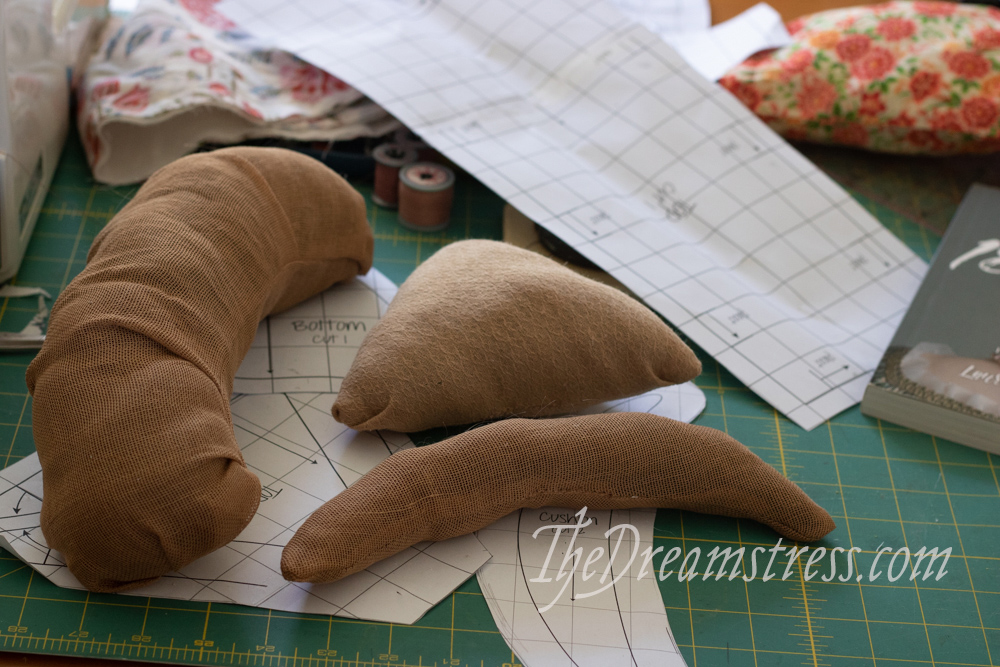
July: No-Buy:
Make something without buying anything. Whether it’s finishing off a UFO, using up scraps of fabric from earlier challenges in the year, sewing entirely from stash, or finding the perfect project for those small balls of yarn, this is your opportunity to get creative without acquiring more stuff.
A 1780s split rump, made from donated fabric and an old pillow. The perfect lockdown project!
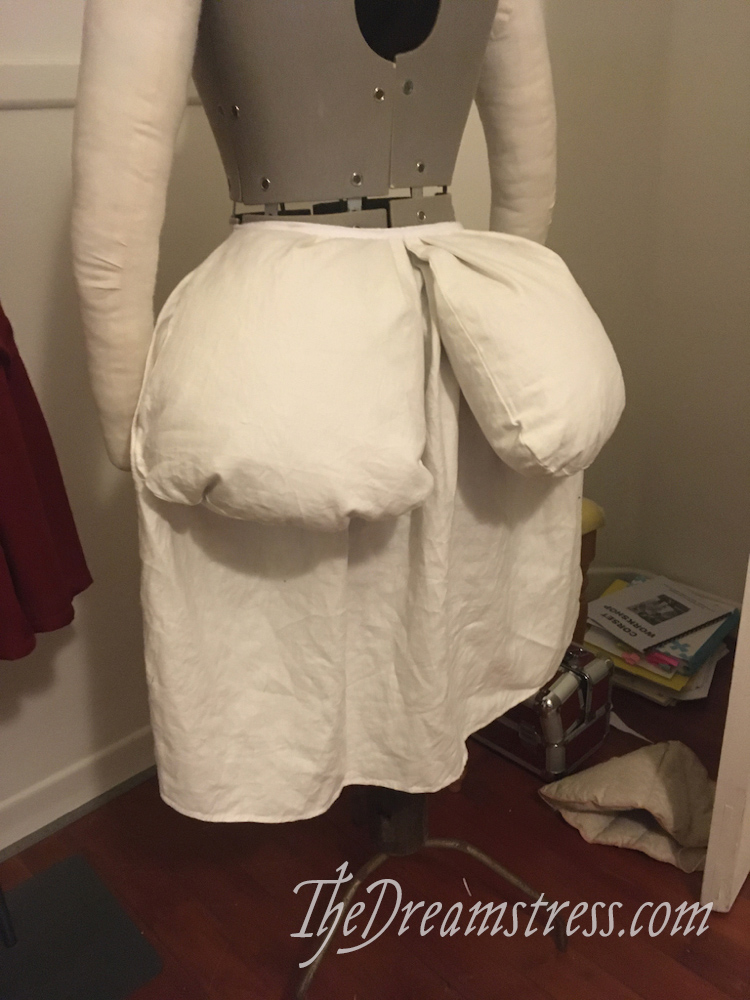
August: Celebration:
Make something for a specific historical celebration, make something generally celebration worthy, make something that celebrates a historical hero, or just make something that celebrates some new skills you’ve learned.
My biggest professional accomplishment of 2020 was the Amalia Jacket pattern, so my personal Amalia jacket (modelled by Elisabeth in the pattern photos) is the perfect match to the Celebration theme. Yay!

September: Sewing Secrets:
Hide something in your sewing, whether it is an almost invisible mend, a make-do or unexpected material, a secret pocket, a false fastening or front, or a concealed message (such as a political or moral allegiance).
I’m stretching this one a little by using the prototypes for the Frances Rump as my entry. I feel like there’s something inherently secretive about rumps. What are you smuggling under there? And I had to keep them secret for three months while I finished the Amalia!
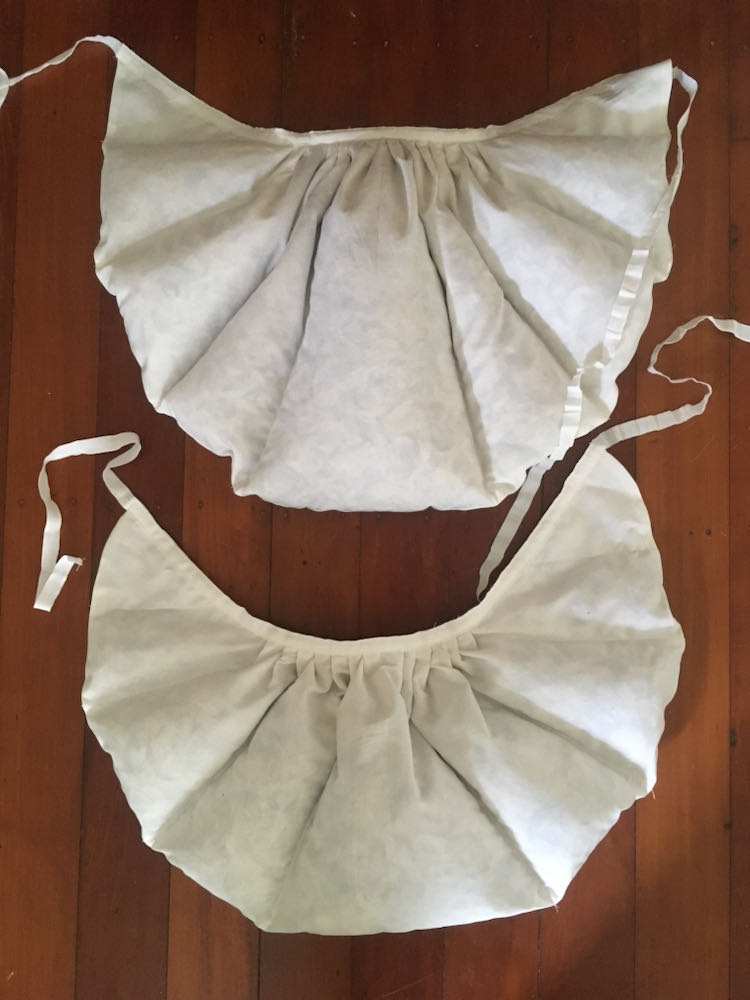
October: Get Crafty:
Make use of your own skills or learn a new one to make something from scratch rather than buy material. The possibilities for learning and applying new skills and techniques are endless. Lace, pleated self-fabric trim, knotted fly trim, embroidery, dyeing, knitting your own corset laces, hand painting your own fabric…
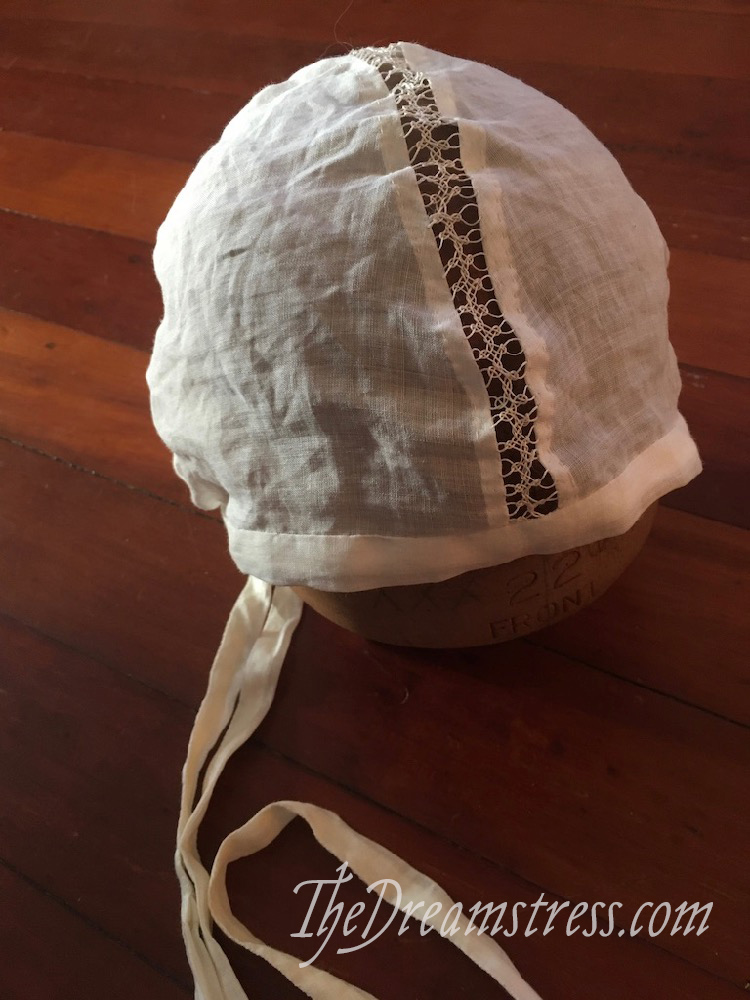
The interlacing down the centre of the St Brigitta’s cap was definitely a new skill for me, and a rather addictive one! (I also can’t believe it was a 2020 make – it feels like I made it two years ago…)
I was so crafty this year that I’ve got two entries for this month! I also got the opportunity to get more experience in another craft: millinery. I got to make a 1780s hat along with my students at Toi Whakaari.

November: Go Green Glow-Up:
Be environmentally friendly and celebrate how your making skills have ‘glowed-up’ as you’ve used and practiced them by taking apart an early make of yours that no-longer represents your making skills, and re-making it so you’d be proud to use it. It can be as elaborate as a total re-make, or as simple as getting the ribbons or buttons you didn’t have time to source at first. You could even take something from a challenge made earlier in the year, and fix the tiny things you weren’t totally happy with.
I’ve got two entries for this! A BIG one, and a little one.
For the big one, after years of work, my Frou Frou Francaise is finally done. Although this is sort-of a new make, it went through numerous re-makes as I was working on it, and as my skills and knowledge grew.
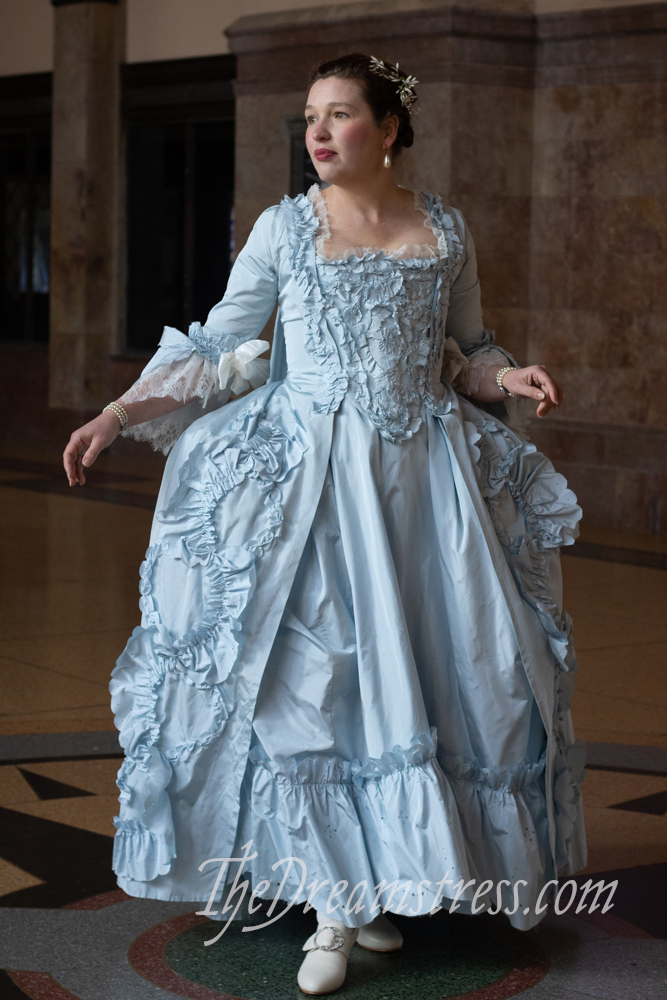
For the little one, a very old make, my chemise a la reine, got a quick re-fashion to bring it to life again. It’s 10 years old, but new ribbons and some mending made me feel beautiful in it.
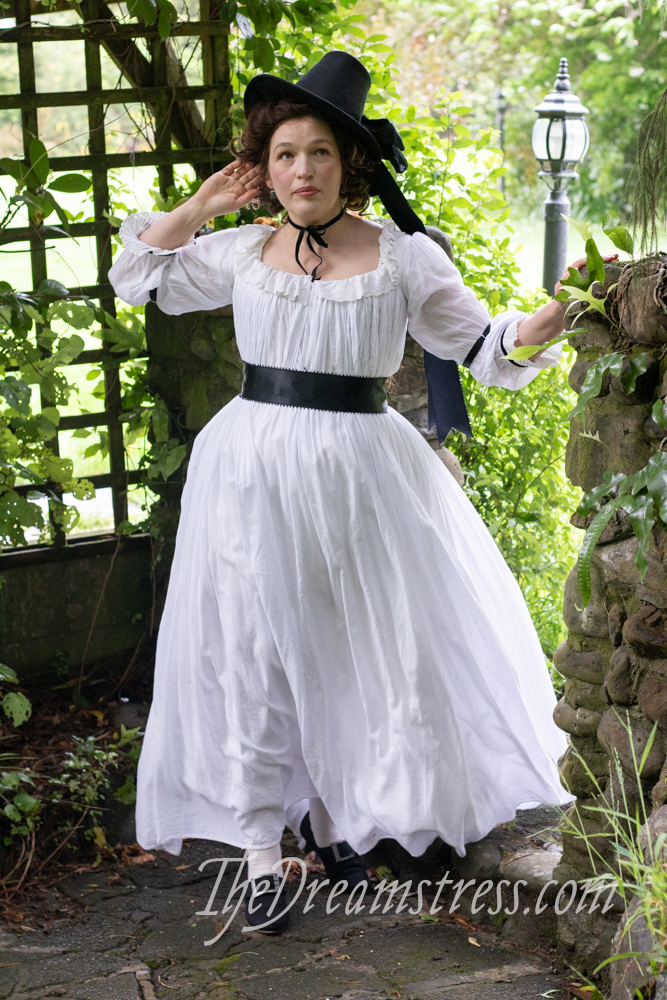
December: Community:
It is the season of giving. Create an item that honours or supports the communities around you, whether in Real Life or online.
We were remarkably prescient in our choices for HSM challenges for 2020. A big emphasis on re-using, on buying local, and on supporting your community. Little did we know how apt those would be for 2020: especially finishing with Community.
I (well, partly I!) made two things for this challenge: one about the online community, one about the local community.
The first item was a red silk 1780s petticoat, made from Burnley & Trowbridge’s great video tutorial, in honour of the way the historical costuming community has supported each other during the coronavirus crisis.
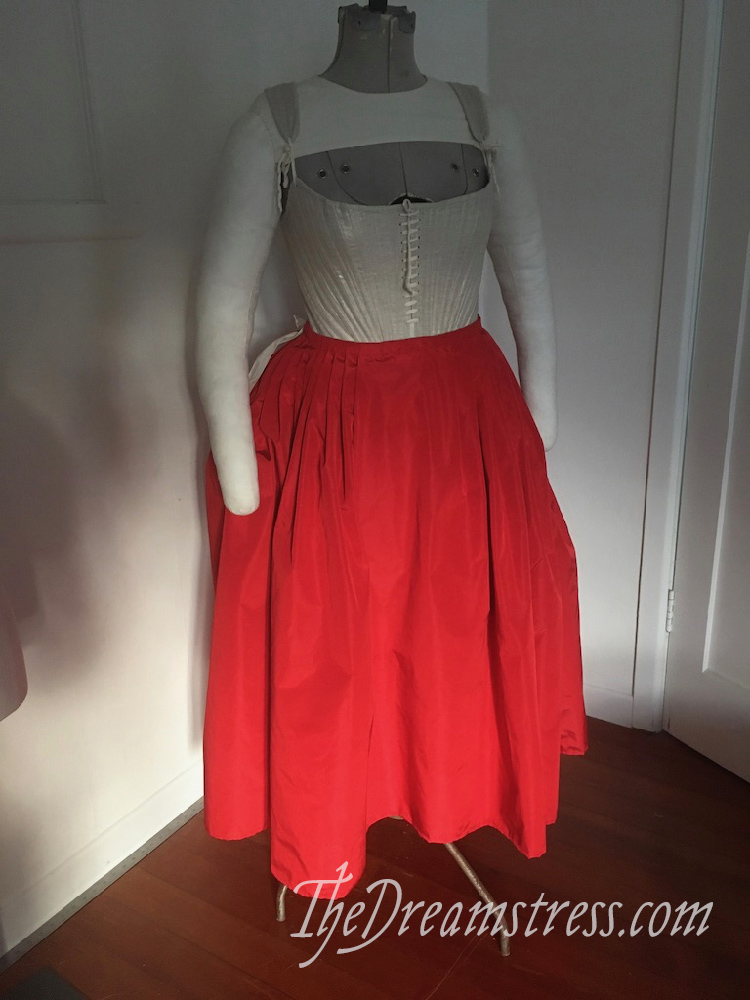
The second is the View B sample of the Amalia Jacket, and the petticoat that goes with it.
They are an homage to community in a couple of ways – with thanks and favours going both ways between makers, teachers, models, and friends. And I’ll tell you all about them in their own post!
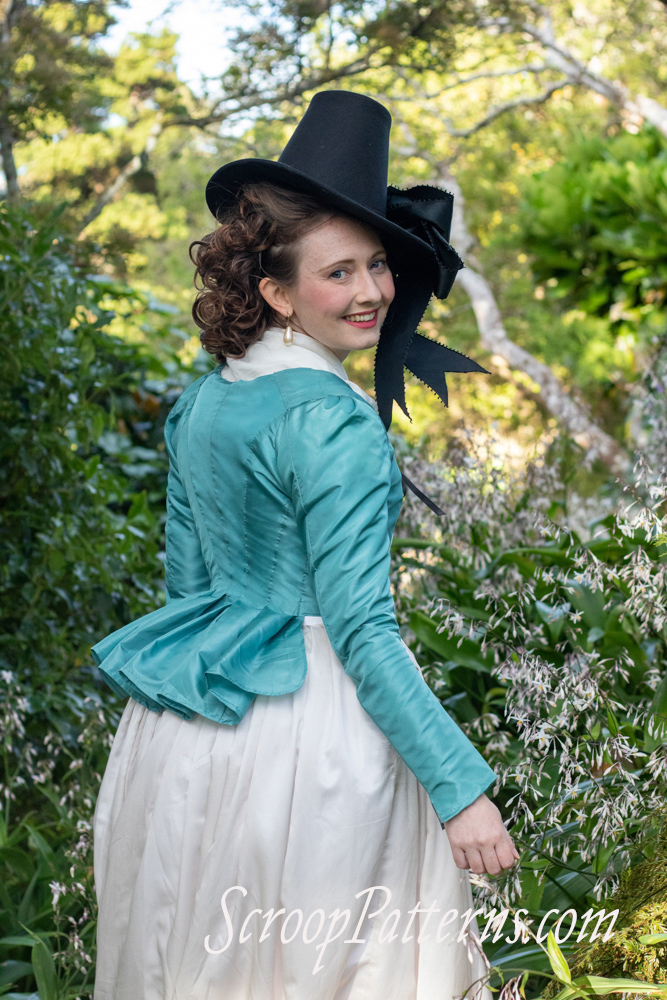
And that’s it! And I’m incredibly pleased with it all. A HUGE personal project finished (francaise), a huge professional project (the Amalia jacket) finished – with two full Amalia outfits finished – including a fabulous hat.
A couple of other rather nice hats, and a really really special piece that’s part of New Zealand’s history.

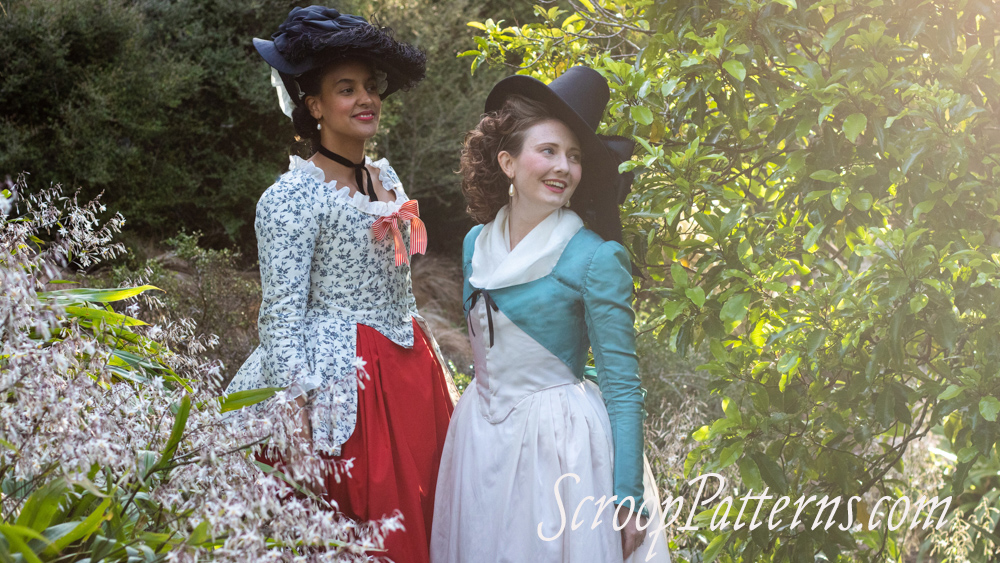
A slightly odd question, perhaps, but how do you wash hair that’s not attached to your head any more? I’ve just been composting mine, but now I’m wondering if I could be making better use of it.
I just collect a bundle, put it in some warm water and use bar shampoo to wash it through and then rinse. Because I’m using it to fill cushions it doesn’t matter if it gets tangled/felted.
Good to know. Thanks!
I lost a lot of hair to alopecia 10 years ago – I saved a lot of it and later made several hair cushions. Although the alopecia patches grew back, my hair is much thinner than when I was young, so the hair cushions have been invaluable when I want an up-do!
I’m cool with reuse of hair. And it would obviously look much better than fake hair. And since it’s your own, it’s way more ethical than sourcing other real hair, and won’t need to be dyed or processed.
(I am imagining something like a clip-in extension? Or are these pads full of hair, but you don’t see the hair?)
There was an old Project Runway final that used real hair, and…it was brave, but I didn’t like it.
These are pads full of hair. You don’t see the hair 🙂 I’ve also kept long lengths of hair from when I had a lot cut off, and turned them into hairpieces that you do see – buns and braids.
whoa…as someone who procrastinates horribly with the normal needed mending, and will do any desperate thing to avoid attempting even minor alterations, i am always amazed at the productivity of people who can sew properly!
well done, you—so many pretty things!
I’m sure you do things that I procrastinate about terribly It’s just what we enjoy! But thank you, that’s very kind indeed â¤ï¸